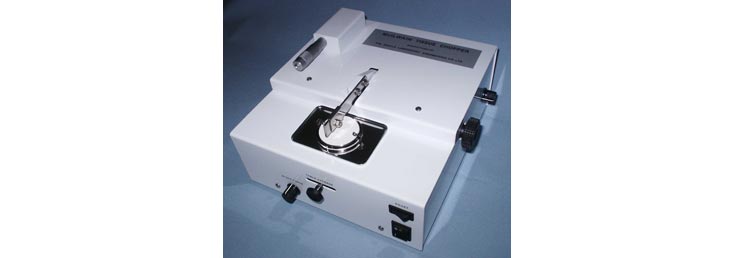
McIlwain Tissue Chopper
This apparatus has been designed to prepare pieces of animal tissues for metabolic experiments and to be especially applicable to small and irregular specimens available at biopsy or from small organs. Its special features are to cause much less disturbance of cell structure than homogenizes or blenders, and to be applicable to fragments which would be difficult or impossible to cut by ordinary methods. It has been applied to liver, kidney and various parts of the central nervous system.
Slices up to 1 mm thick and cubes or prisms up to 1 mm cross section can be prepared with the chopper in 30 s. Provision is made for stepless variation of slice thickness from zero to the maximum by means of an indexing clutch in conjunction with a micrometer head, the latter being calibrated in microns.
The action of the machine is as follows: a circular stainless steel table, on which the specimen is placed, is traversed automatically and at a speed which can be varied, from left to right of the machine. At the same time a chopping arm carrying a blade is raised and dropped by its own weight and the tension of a spring, at speeds varying from zero to a maximum of 200 strokes per minute.
As the table carrying the tissue passes under the blade it is chopped into the required slices. If prisms are required the table is returned to the left hand side of the machine, turned through 45 degrees, and the process repeated. Cubes are formed by rotating the table 90 degrees. A safety limit switch is provided to prevent the machine overrunning and a quick return mechanism is fitted for the return of the table. All parts coming into contact with the tissues are made of stainless steel. Finish is in grey stove enamel.
Voltages 100 - 120 V / 200 - 250 V Consumption 100 W
Overall dimensions 30 cm × 28 cm × 15 cm high
Total weight 9 kg
